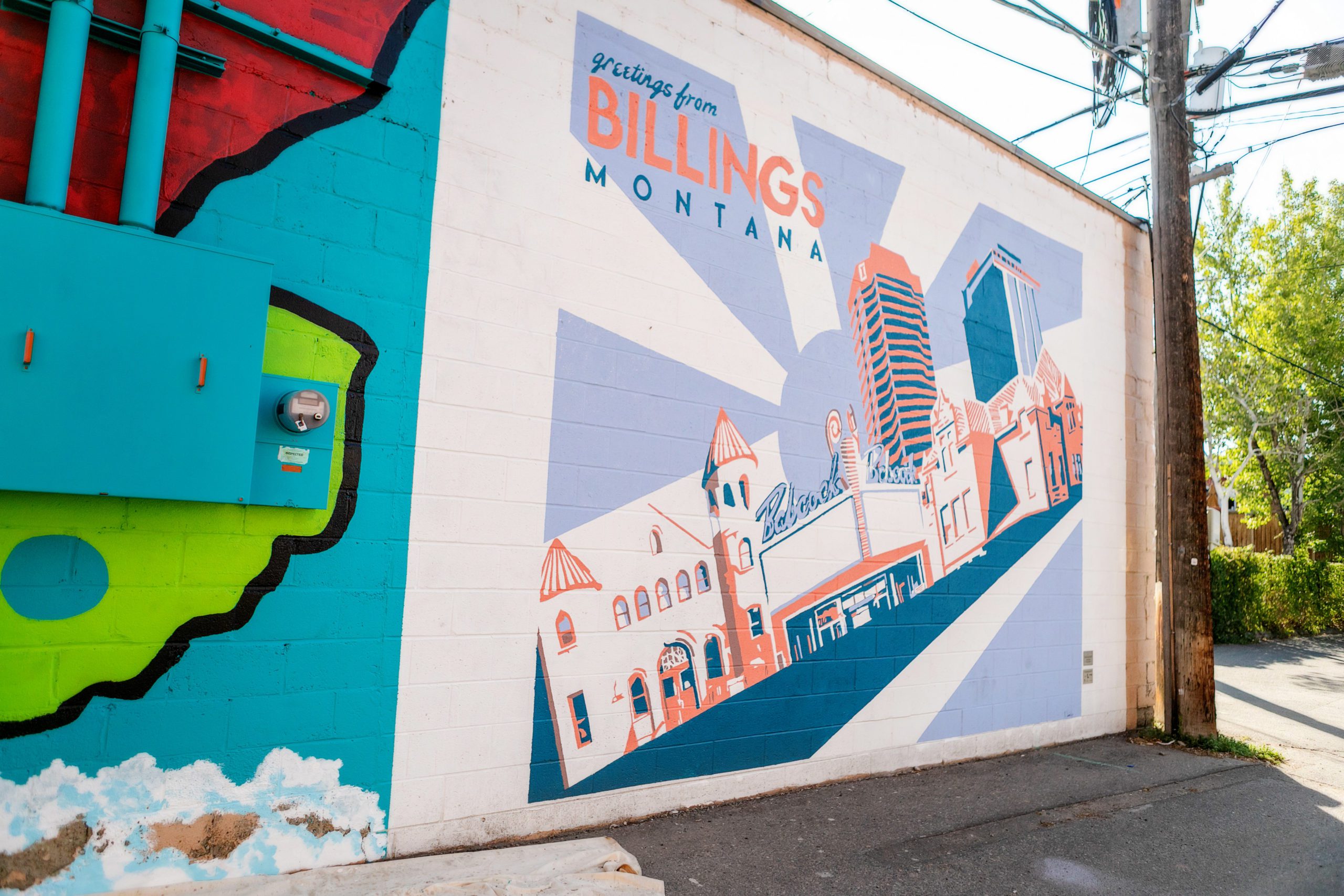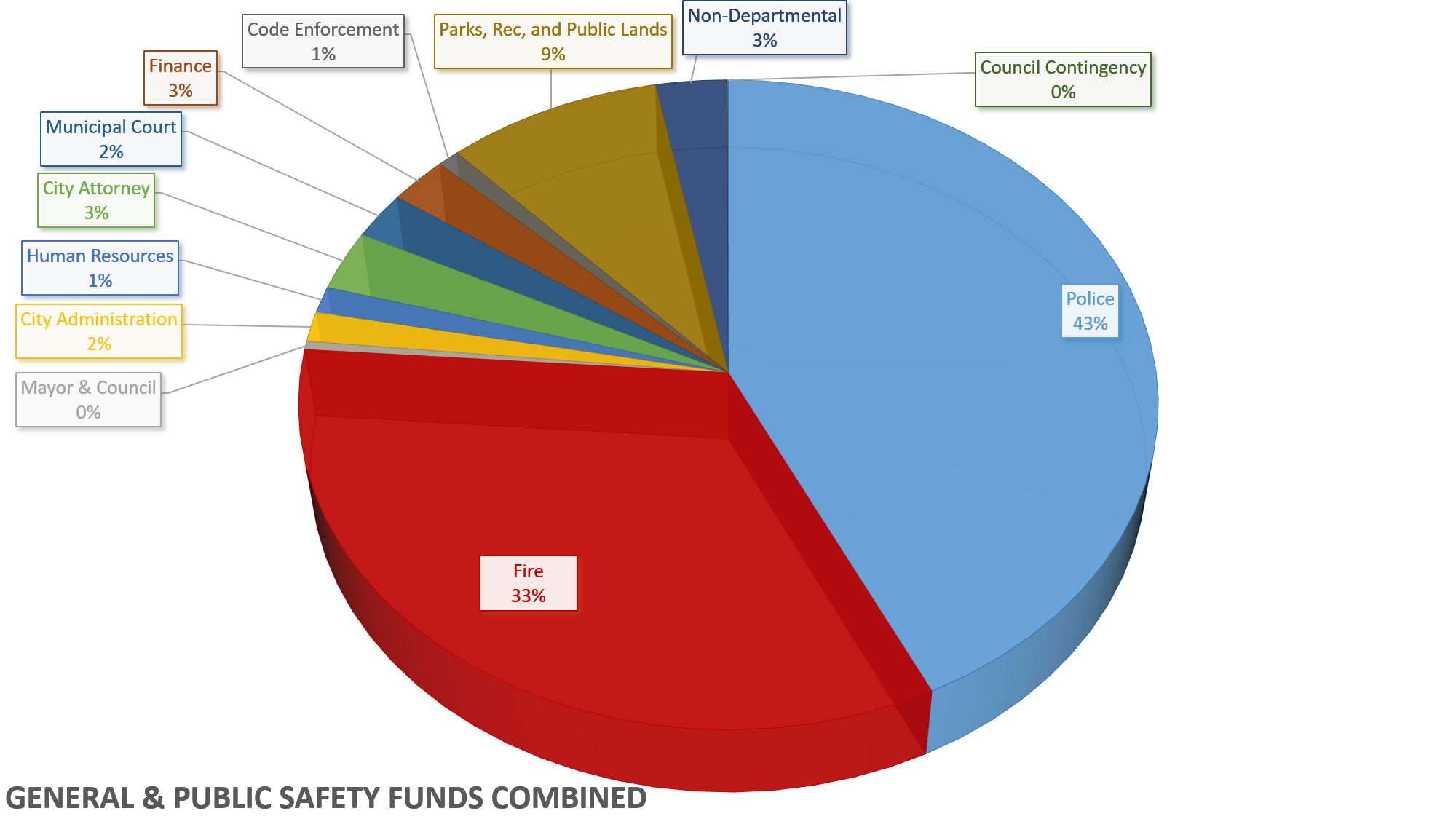By Kelly McCandless
Photographs by Rhea Wolpoe
New Murals were recently completed on the west and south sides of The Pub Station. Public art is a
beautiful placemaking contribution and a deterrent to crime.
As Billings grows, our community experiences a natural uptick in crime and public safety demands. In an effort to shed light on Chamber members’ public safety concerns, our first two issues of LiNK Magazine this year featured stories focusing on specific components of public safety. In the March issue you read about the safety concerns stemming from marginalized members of our community and how different agencies and businesses come together to offer services and uplift those in need, along with the ways businesses can have a seat at the table in addressing these concerns. In June, we featured the meth epidemic and how addiction and drug trafficking impact the Billings area.
These significant issues are only part of the public safety story. The Billings Chamber hears increasing concerns from our members about homelessness, police and fire resources,perceptions surrounding safety, and impacts to business. Noting these concerns, our board of directors identified public safety as one of the strategic priorities our organization will be tackling now and into the future.
This next installment in our series highlights the financial picture and challenges facing the City of Billings in terms of funding law enforcement and fire programs at a level appropriate for a growing city. While law enforcement is part of the solution,it’s not THE solution. One theme is abundantly clear: these problems will only resolve themselves by working together and remembering this is an issue owned by all of us.
RESOURCE LIMITATIONS
While discussing with City Administrator Chris Kukulski and Assistant City Administrator Kevin Iffland about public safety and the challenges facing Billings, it is clear they know the issue inside and out. They also will be the first to note that there isn’t a simple solution.
“A silver bullet doesn’t exist to address these issues,” remarked Iffland, who spent over 20 years with the Billings Police Department prior to his promotion into City Administration.
In the recently passed City budget, 76% of the general fund is dedicated to public safety: 33%to fire and 43% to police. This doesn’t include the municipal court system or the city attorneys –key portions of the full public safety funding and resource picture.
“Billings isn’t facing these issues because we’ve failed to establish safety as a priority,” explains Kukulski.
When the last public safety levy passed in 2004,$8.2 million was added to that budget annually.The annual amount cannot change, but, over the last 15 years, the value of $8.2 million has changed drastically.
Our businesses understand the effect of inflation and growth. A $100 budget item in FY 2004 likely won’t cover the same expense in FY 2019. The same applies at a larger scale when we look at city services. The $8.2 million levied in 2004 will not provide the same Public Safety value 15 years later, considering cost and service increases.
Luckily the static $8.2 million from the 2004 levy isn’t the only revenue funding public safety.“City Council added 20 police and firefighters a couple of years ago – no one would argue that we needed them,” Kukulski continued.“But the voters didn’t have to approve that growth. They were possible through growth in property tax value. Our community isn’t seeing a steady addition of 1-3 officers or firefighters annually. Growth happens in chunks based on voter approval through a levy or growth in tax revenue.
”We are fortunate to see an increase in police and firefighter personnel, but even those additions leave us short of the national average of police officers per capita for cities our size. According to the FBI’s 2016 Uniform Crime Reporting data published at Governing.com1, Billings is almost 30 officers shy of the average for cities our size.And although more police aren’t the answer to every public safety issue as Kukulski and Iffland note later in this article, this is important context when discussing what we need to fund in a safety levy.
LEVY POTENTIAL
The need for a Safety Levy is a bit of a hot button issue. No matter how you feel about it, though,Kukulski says simply, “We don’t know where we’re headed yet. There will be discussion about the potential for a Levy early in 2020.
”Before any decision is made, Kukulski and Iffland both stressed the necessity of having a clear outline of exactly what solutions will come from levying additional funds.
“The public has a reasonable expectation to know what we will do with additional resources to address the issues being seen,” notes Kukulski. He’s quick to add that affordability is important to discuss, too. Currently,homeowners pay an average of $44 per month for the public safety services they receive and an additional $144 per month for all other city services.
City leaders are in the process of evaluating data on all ongoing public safety programs,examining the gaps and evaluating the best resources to address those gaps. Further,they’ve considered other communities with similarities to Billings to see how they’re successfully addressing their gaps. Iffland explains “Ultimately, we want to learn from our residents where they want Billings to be and what the expectations are. When we compare those expectations to the public safety data and the trends we’re seeing, we anticipate a clear argument for or against a public safety levy to take shape.”
Source: City of Billings
IMMEDIATE ACTION
While key conversations continue to move forward in city government, businesses and individuals—generally nimbler to implement change—are taking initiative to move the needle now.
Todd Buchanan with Buchanan Capital is one of the leaders taking ownership of the issue.
“Are we as individuals and as a community all engaging in an ethic which couples personal responsibility with the Law Enforcement focus to address the public safety issues we are facing?” Buchanan asks.
Sean Lynch, owner of The Pub Station and 11:11 Presents, feels strongly about his responsibility as a business owner in Billings.
“Safety is the number one priority at Pub Station. Getting our patrons in the door, while they’re in the building and when they leave. We have to do everything we can to make our customers feel as safe as possible. If people come to our business and walk by other businesses without that approach, it deters my customers from coming.”
Lynch shares how his proactive approach to keeping his businesses safe has helped address issues in his immediate vicinity. “We constantly send the message that Pub Station is not a place to loiter. Whether I’m working or if I’m simply driving by with my family on a Sunday, if someone is sleeping or hanging out around our building, we will stop and ask them to move on.Action speaks, and the message is received.”
Consistency in this approach means Lynch doesn’t see the activity on his property that can be found elsewhere. “We can point blame all we want, but if we want action, as a business owner that means taking control of your space,” he continues.
Returning to Iffland’s initial observation, there is no silver bullet. Addressing these issues requires a multi-pronged approach, and few are better positioned to begin making change than our business owners.
Buchanan echoes the sentiment and the “we can’t do it alone” mentality. “The proverbial ‘they’are not going to solve this; WE as individuals, business owners, neighbors and community organizations have to be a part of the solution.”
Lynch agrees. “There has to be a change in mentality. We can’t police our way out of these problems. They are part of the solution, sure,but government moves slowly. If you want immediate results, make them happen within your own space. Business owners have to take pride in our establishments, our businesses.”
And the solution is not only needed in downtown Billings – the desire to overcome frustrations with continuing public safety issues stretches throughout the community. With homeless camps and violent crime reported allover the city, it’s time for all businesses to act.
The Billings Heights, arguably one of Montana’s largest populations with over 30,000 people in that geographic area alone, sees issues similar to downtown Billings: transience, crime, traffic issues, and more.
Ming Cabrera, Chairman of the Heights Business Association, a member of the Heights Taskforce, and a Main Street business owner,speaks passionately of the issues impacting his and other businesses in the east part of Billings.
“Traffic moves too quickly on Main Street. We see frequent wrecks and businesses struggle when motorists/potential customers feel unsafe traveling the road. Additionally, our businesses are not immune to the increased rates of crime and theft related to drugs,” Cabrera explains.“Both my fellow businesses owners and I find drug paraphernalia near our trash cans and face transients on our properties.”
Cabrera, too, notes that the successes the Heights-area businesses have seen are the result of coming together to address issues. “The biggest success stories to date are the formation of the Heights Business Association and a very active Heights Task Force.” He explains that the city is more aware of the needs because of their unified voices. Working together as an association has impacted traffic issues that would’ve been bad for business, and demanded change necessary for the safety of residents by shaping some of the development near the new Medicine Crow Middle School.
“We have many important issues we want to address, and the strength of our voices is beginning to move the needle,” Cabrera said. He,too, recognizes we can’t do it alone.
THE ROAD AHEAD
“The course that we’re on is the costliest course,”Iffland explained. “Incarceration is expensive,costing the City $18,000-20,000 per month for city ordinance violations. Is it needed? Yes, but we must seek alternatives which would be more affordable and more effective.” He goes on to explain that implementing diversion programs to help offenders deal with mental health and/or addiction issues could be a much more affordable and impactful path, and that without those diversion programs, incarceration is the best option available to law enforcement.
“Our proactive policing programs are tremendously successful,” Iffland continued.“Programs like our Street Crimes Unit and Project Safe Neighborhoods yield results of issues facing the community. But we simply lack the personnel to run them continuously.”
He explained that Billings may end up with less citizen satisfaction because resources don’t meet expectations, nor do they meet the actual needs being seen. “The old solutions are not the right ones to solve today’s issues,”Iffland summarized. “It would be less costly to have more resources to implement proactive programming. If we could help people earlier in the process, we increase the likelihood they actually get the help they need, and it costs us less in the long term.
”Kukulski also notes the subjective nature of this issue and how that impacts developing a comprehensive solution. “If you compare issues we’re trying to solve, some are easier than others. Solving the sewer issue is easy – we can calculate the solution to that problem. But public safety is not the same. Safety is subjective and perceptions vary widely.
”Generally, taxpayers don’t want to assess their public safety and conclude that results may vary.Observant citizens will notice additional police on the streets; though they aren’t likely to notice the positive impacts getting addicts and mental health patients into treatment rather than jail or on the streets. But, as Iffland points out above, it’s less costly to get a person substance abuse or mental health treatment than to put them in jail. As conversations about what is needed and how to spend limited resources continue, we need to seriously consider the most effective use of taxpayer dollars. If the best outcomes stem from adding law enforcement personnel AND providing additional funding for substance abuse and mental health treatment, we need to be good stewards of public monies and make decisions based on outcomes rather than ideology.
With public safety at the forefront of discussion—especially among candidates for City Council—it’s important to note that statewide data indicates Billings is in the middle of the pack in terms of crime rate statewide. While we are not in the midst of a historical crime wave, we have a community who pays attention, and who seems to demand better than we have today. Kukulski agrees, “We have to invest in the level of service we want as a city –and that will be a series of things, over decades,that lifts our community to where demand outstrips supply.”
WE CAN’T DO IT ALONE
Buchanan, who along with Mike Nelson with the Northern Hotel, Downtown Billings Alliance and the Billings Chamber, was instrumental in bringing a public safety meeting to downtown Billings last November focusing on urban engineering as a means for crime prevention. He notes that these strategies hold tremendous promise, but won’t be effective left on the shelf. “Our community, by getting behind a Law Enforcement led strategy, can take the next step in making us all safer. We need to canvass this community with the information and strategies outlined, and as individuals we need to embrace the responsibilities, we can each adopt to move the dial.”
Lynch summarizes his approach to the issue simply: “We can’t wait for “someone else” to solve the problems. That will never happen. Be informed, be active, and take care of your space,it doesn’t just impact you, it impacts everybody.” As part of the strategy Buchanan explains, the Billings Chamber is committed to delivering solutions for businesses. Through the upcoming year, you’ll see our team grow with the addition of a Public Safety Specialist and training and certification for one of our staff to provide Crime Prevention through Environmental Design (CPTED) evaluations. This growth to our staff allows us to deliver services to you,our members, so you can take ownership and make immediate changes to your business, eliminating vulnerabilities and empowering staff. Additionally, we’re continuously monitoring the conversations happening about public safety funding, participating on the Yellowstone Substance Abuse Connect committee, and are committed to educating our membership as these issues evolve.
If you’d like to learn more about the Billings Chamber’ Public Safety program, please contact Dan Brooks at daniel@billingschamber.com.
Local artists create unique, colorful art on the outside of The Pub Station.



